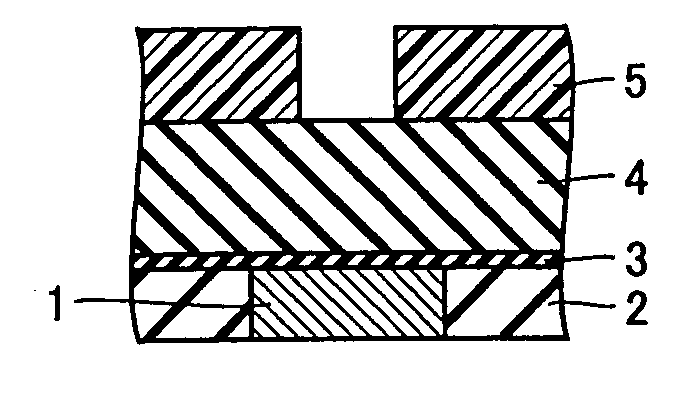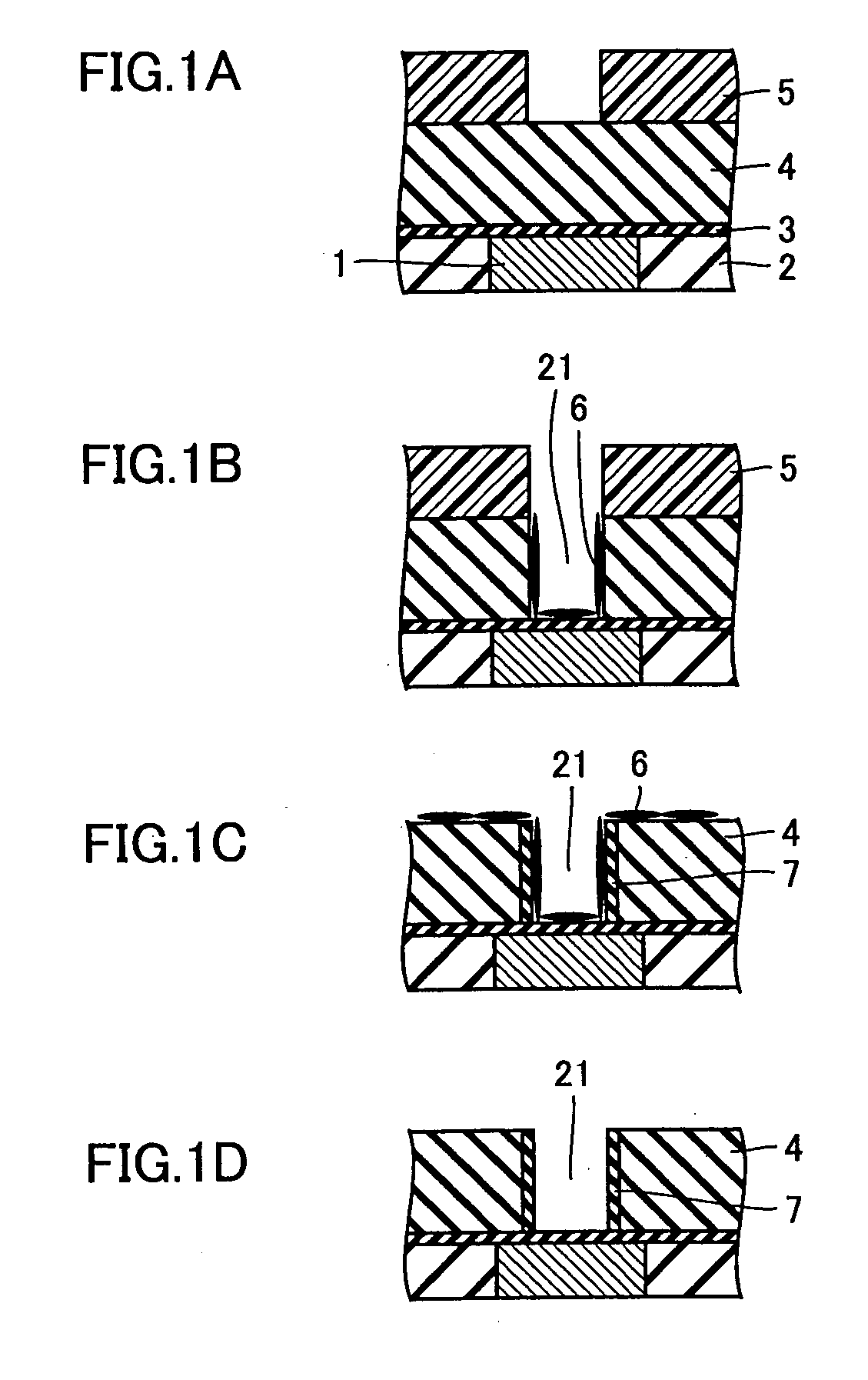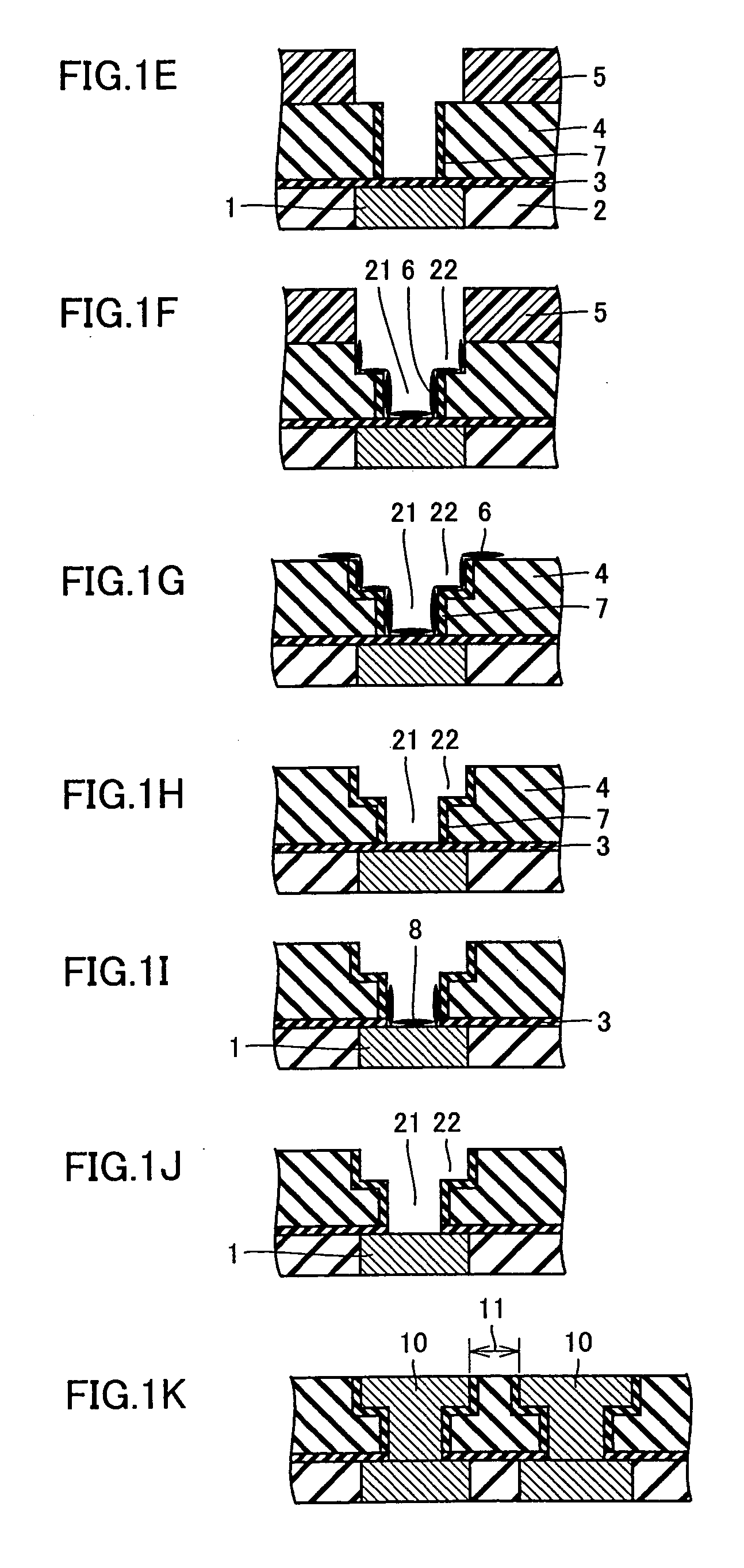Cleaning composition for removing resists and method of manufacturing semiconductor device
a technology of resists and cleaning compositions, applied in the direction of photomechanical devices, instruments, photosensitive material processing, etc., can solve the problems of reducing the driving speed of semiconductor elements, degrading the corrosion prevention effect of copper, and affecting the performance of semiconductor elements
- Summary
- Abstract
- Description
- Claims
- Application Information
AI Technical Summary
Benefits of technology
Problems solved by technology
Method used
Image
Examples
Embodiment Construction
does not include the A component, so that the ArF resist removing efficiency became poor. Comparative Example 2 has its pH less than 4, so that the ArF resist removing efficiency and the corrosion resistance of the Cu film were degraded. Comparative Example 3 has its pH exceeding 8, so that the corrosion resistance of both the Cu film and the Low-k film was degraded.
[0106] It is found from Examples 3 and 5-8 that the ArF resist containing acrylic resin in large amount and its residue are removed more efficiently as the content of diethylene glycol monobutyl ether within the B1 component is increased.
2TABLE 2 Comp. Comp. Comp. Ex. 4 Ex. 9 Ex. 10 Ex. 11 Ex. 12 Ex. 5 Ex. 6 Ex. 13 Ex. 10 Ex. 14 Ex. 15 Ex. 16 A component: NH.sub.4F (mass %) 0.0 0.1 0.1 0.1 0.5 0.1 0.1 0.1 0.1 0.1 0.1 0.1 B1 component: DMAC + DGBE (mass %) 80 80 80 80 80 80 80 80 80 80 80 80 DMAC mixed mass ratio 0.7 0.7 0.7 0.7 0.7 0.7 0.7 1 0.7 0.5 0.3 0 DGBE mixed mass ratio 0.3 0.3 0.3 0.3 0.3 0.3 0.3 0 0.3 0.5 0.7 1 ...
PUM
| Property | Measurement | Unit |
|---|---|---|
| mass % | aaaaa | aaaaa |
| mass % | aaaaa | aaaaa |
| mass % | aaaaa | aaaaa |
Abstract
Description
Claims
Application Information
 Login to View More
Login to View More - R&D
- Intellectual Property
- Life Sciences
- Materials
- Tech Scout
- Unparalleled Data Quality
- Higher Quality Content
- 60% Fewer Hallucinations
Browse by: Latest US Patents, China's latest patents, Technical Efficacy Thesaurus, Application Domain, Technology Topic, Popular Technical Reports.
© 2025 PatSnap. All rights reserved.Legal|Privacy policy|Modern Slavery Act Transparency Statement|Sitemap|About US| Contact US: help@patsnap.com



